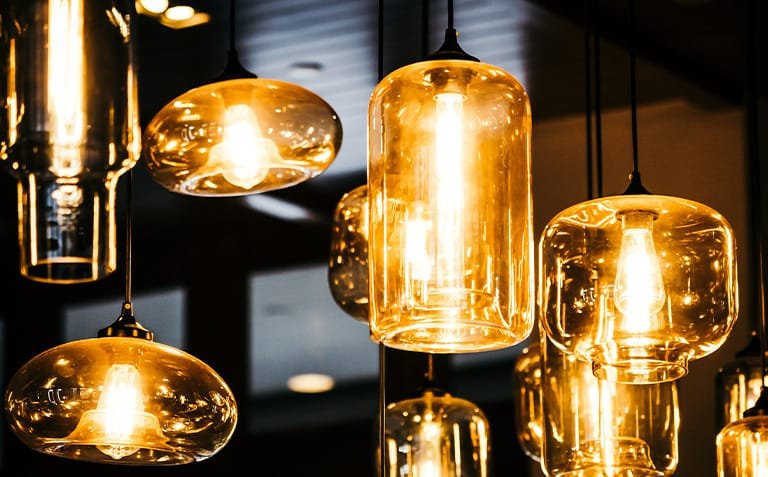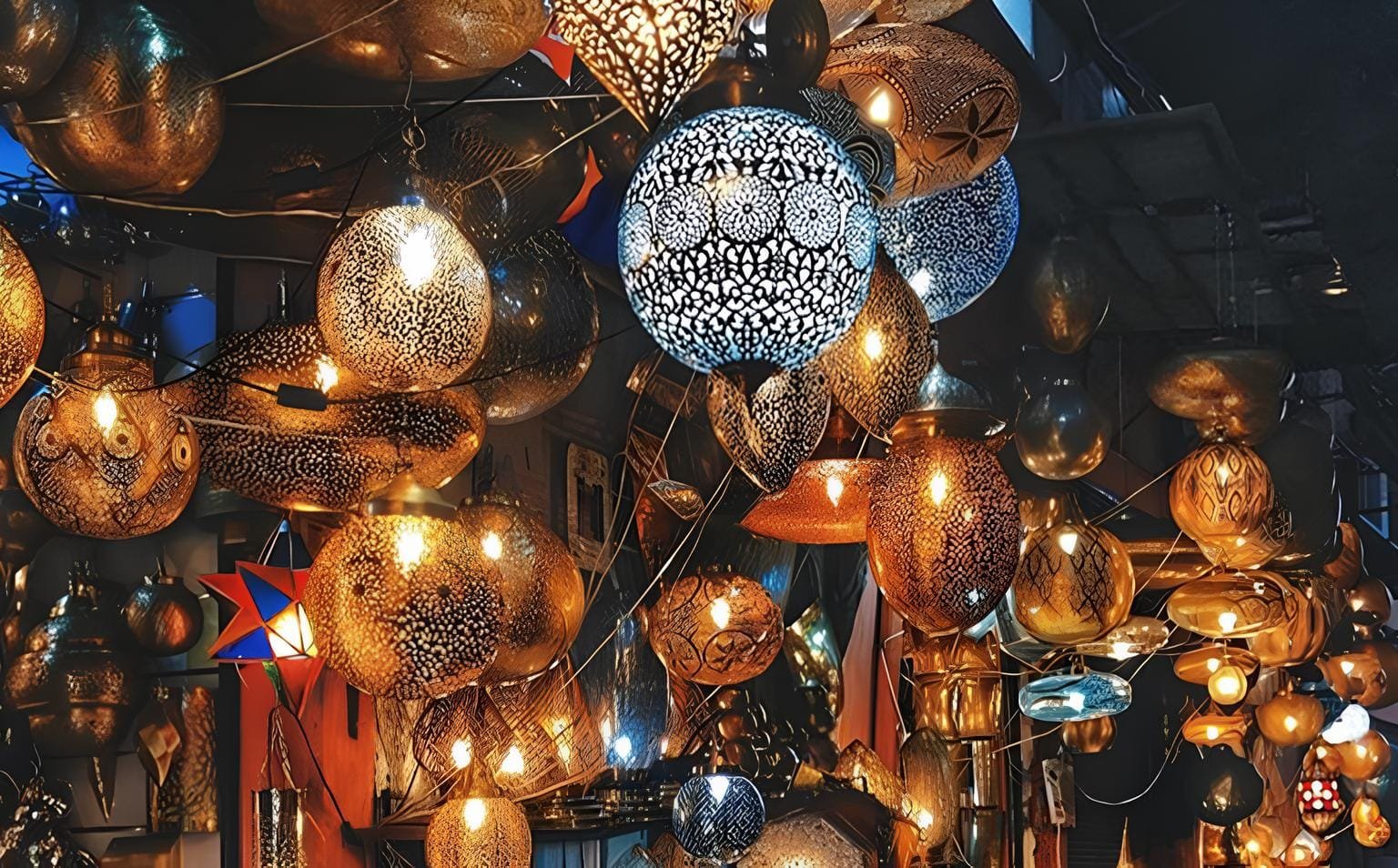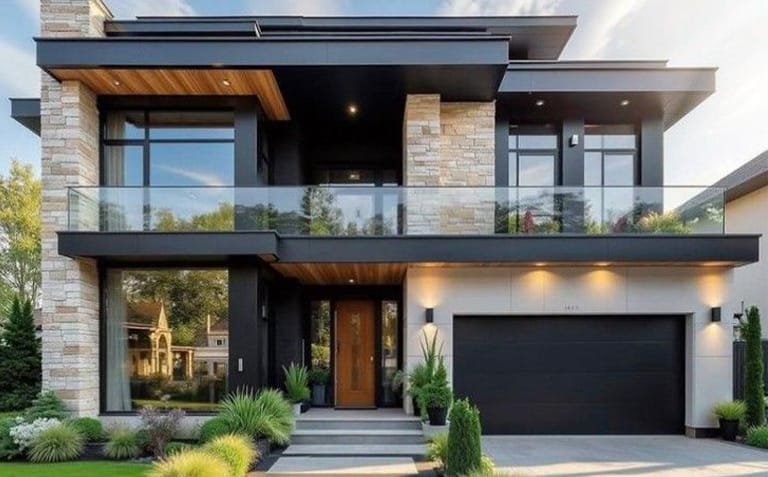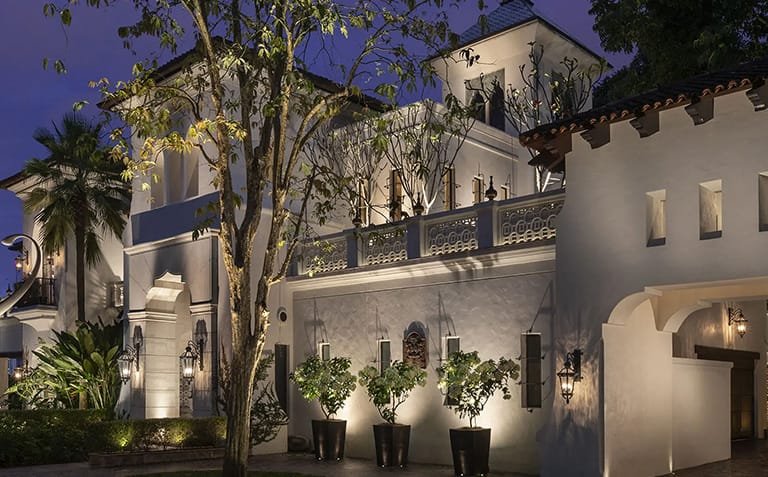
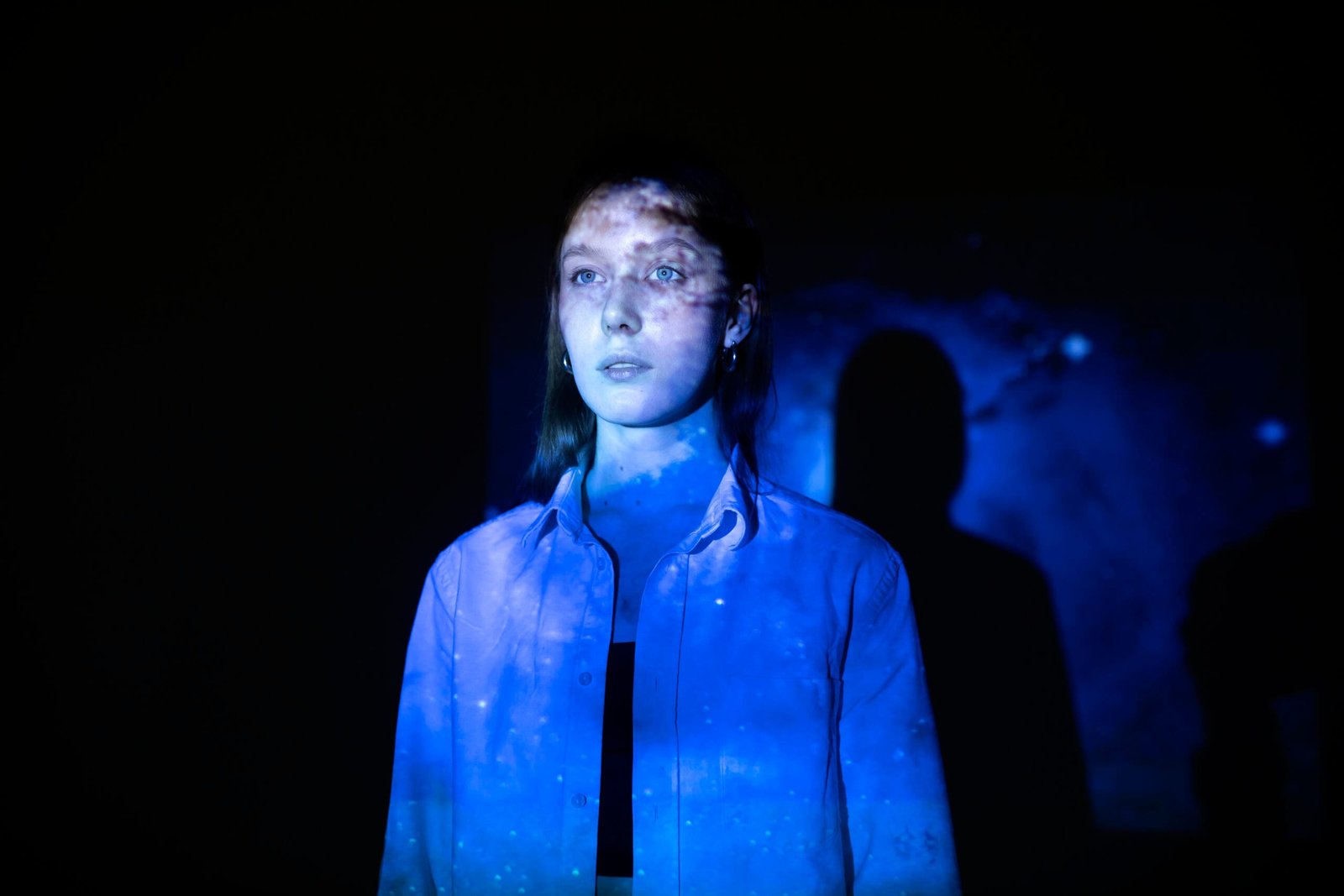
In everyday life, light not only allows us to see our surroundings, but also directly affects our mood, energy and overall health. Although we are often unaware of it, the lighting of our environment shapes how our brain works, how we feel and even how we behave. In this context, the psychological effects of light on people are very deep and wide. At this point, we have prepared our content titled “Psychological Effects of Lighting” for you to discover how lighting works psychologically and how various types of light shape our mood. You can have detailed information about the effects of lighting on human psychology by browsing the content.
Lighting, as it is known, has a great power to influence human psychology. Because elegance directly shapes people’s physical and emotional responses. So much so that the human brain’s response to light stems from the evolutionary survival instinct. In this context, humans are biologically more sensitive to natural light, especially daylight. Natural light, in particular, regulates our biological clock, the circadian rhythm, and affects our body’s hormones such as melatonin, which determines our sleep patterns and overall energy levels. This has a direct effect on our mood.
On the other hand, lighting shapes both the physical functions of our body and our psychological state through factors such as the intensity, color temperature and direction of light. For example, warm and soft lights create a relaxing environment, while cool white light often increases focus and creates a more energetic atmosphere. Furthermore, exposure to natural light promotes feelings of happiness and relaxation by increasing serotonin levels, while low light levels can trigger negative emotional states such as depression and anxiety. Therefore, since lighting is a powerful factor that drives our psychological states, social behavior and overall quality of life, it is essential to choose light in the right way.
1. Influencing Mood
Lighting can directly affect our mood. In particular, the brightness and color temperature of light play a major role in determining individuals’ energy levels, moods and focusing capacity. For example;
Since bright lights often have an energizing and uplifting effect, high brightness in the morning and on sunny days can make individuals feel more energized and happy.
Harsh and cold lights (e.g. blue light) can have an emotionally stressful and tense effect.
Warm lights (e.g. shades of yellow and orange) often have a relaxing and calming effect. This type of light is preferred for relaxation before sleep.
2. Emotional State and Mental Health
Lighting can directly affect emotional states such as depression, anxiety and stress. For this reason, inadequate lighting, especially indoors, can create a pessimistic atmosphere and have a negative impact on people’s mood. In this context;
Natural light can have positive effects on mental health. Sunlight encourages the body to produce serotonin, which increases feelings of happiness and well-being.
Inadequate lighting can be associated with conditions such as extensive depression and sleep disorders. Low light levels, especially in the office or home, can be demoralizing.
3. Focus and Productivity
Lighting plays a big role in influencing how focused an environment is and work productivity. bThe right lighting can improve focus, while inadequate lighting can lead to distraction. That’s why;
Well-lit environments can improve concentration and increase productivity. Natural light or cool white light, especially in workspaces, positively affects focus and productivity.
Poor lighting, on the other hand, strains the eyes and can cause headaches, which can lead to distraction and inefficient work.
4. Biological Clock and Sleep Pattern
Lighting directly affects the biological clock (circadian rhythm) of individuals. This rhythm regulates the sleep and wake cycle.
Blue light, especially when overexposed in the evening, suppresses melatonin production and can disrupt sleep patterns. Therefore, light from screens (phone, computer, TV) in the evening negatively affects sleep quality.
Natural light, on the other hand, helps regulate the biological clock and exposure to natural light during the day can make it easier to fall asleep in the evening.
5. Environmental Impact and Psychological Perception
Lighting can change the perception of a space. In particular, the right lighting can make a space feel larger, more spacious or warmer.
Low light levels can make small spaces feel cramped and suffocating, while high light levels can make a space feel larger and more open.
Lighting can also enhance the aesthetic value of a place. For example, well-planned lighting can highlight architectural details, accentuate a work of art or decor.
6. Social Interaction and Behavior
Lighting can also influence social interactions. Soft, warm lights often create a more intimate and social atmosphere, while cold, harsh lights can push people away from each other.
In social spaces such as restaurants and cafes, warm lights provide a relaxing environment, which encourages prolonged conversations.
Cold lights, on the other hand, create a more formal and business-oriented atmosphere. But they make it difficult to encourage long-term interactions.
7. Reducing Stress and Anxiety
The right lighting can reduce stress levels. Warm lights help people relax, while exposure to sunlight, especially in outdoor environments, can alleviate symptoms of depression and anxiety. Also, the introduction of natural light provides psychological comfort in a stressful environment.
Soft light is characterized by its calming, soothing and emotionally balancing effects on human psychology. In line with this scope, soft lights, unlike sharp and intense lighting, soft light does not tire the eyes and does not stimulate the nervous system. Thus, it creates a feeling of relaxation and relaxation on individuals. This type of light, which is especially preferred in environments such as homes, therapy rooms, yoga studios and hotel lobbies, helps people to stay more mentally balanced by reducing stress and anxiety levels. At the same time, as soft light supports the production of melatonin, the sleep hormone, it facilitates the transition to sleep and provides a quality rest. Thus, people start the day with a more comfortable sleep.
Finally, this type of light, which creates a sense of warmth, trust and privacy in the individual psychologically, also offers a more intimate and natural atmosphere in social interactions. Therefore, soft light is an important environmental factor for both mental health and quality of life.
Lighting is one of the most important environmental factors that directly affect sleep quality. Because as it is known, the human body works in synchronization with the circadian rhythm, also known as the biological clock, and daylight. This synchronized work, exposure to natural light during the day, allows the body to secrete the hormones necessary for wakefulness and energy production, while at the same time increasing the release of the hormone melatonin and facilitating the transition to sleep. However, exposure to screens (phones, tablets, computers) that emit artificial and blue light disrupts this balance and suppresses melatonin production, making it difficult to fall asleep. In addition, high-intensity or cold-colored lighting used in the bedroom also delays the transition to sleep and reduces sleep quality. For this reason, it is important to prefer dimmer, warm-toned and soft lights in the evening hours for a quality sleep.
Blue light is a type of light with a short wavelength that is intensely emitted from digital screens (phones, tablets, computers and televisions) and LED lighting. While this type of light can be beneficial with its effect of increasing alertness during the day, it can seriously disrupt sleep patterns when exposed in the evening because blue light suppresses the production of the hormone melatonin, which governs the brain’s biological clock. As a result of this suppression, a person may have difficulty falling asleep, wake up more often or feel unrested in the morning. In the long term, exposure to blue light at night can lead to problems such as chronic insomnia, fatigue, and even immune system weakness. For this reason, limiting the use of digital screens at least 1-2 hours before bedtime, using screen filters or preferring blue light blocking glasses are very important for a healthy sleep pattern.
Light has a direct impact on the psychological state and productivity of individuals in work and office lighting environments. In particular, the right lighting increases focus, reduces mental fatigue and increases motivation. In addition, natural light supports the secretion of serotonin, which increases the brain’s alertness level, making the person feel more energetic and balanced. On the other hand, inadequate lighting or lighting with the wrong color tone causes problems such as headaches, eye strain and stress, leading to decreased productivity and work quality. Therefore, light intensity, color and placement in working environments should be meticulously planned not only in terms of physical but also psychological comfort. In this way, the productivity of working individuals can be greatly increased. In this context, we can consider the psychological effect of light on work within 2 scopes. The first of these; The effect of lighting in office areas on human psychology. Another is the effect of lighting in workspaces on human psychology.
The type of lighting used in office spaces plays an important role in employee mood, motivation and productivity. The right lighting not only ensures the visual comfort of the space, but also directly affects the mental performance and emotional balance of employees. For example, LED lighting with a cool white tone, which is closest to natural light, reduces fatigue while increasing focus on tasks that require attention. On the contrary, working under insufficient light can have negative effects such as eye strain, headaches and increased stress levels. In addition, individuals working under constant artificial and dull light may experience loss of motivation, mood disorders and poor performance over time. Therefore, office lighting should be designed in accordance with the function of the space and the intensity, color and direction of light should be carefully adjusted. Thus, optimizing lighting according to individual needs ensures that employees are more comfortable and productive both physically and psychologically.
Another area where lighting should be considered is the work areas. Because the lighting selected in work areas directly affects both productivity and employee health. At this point, cold white light should generally be preferred in work areas. In this way, long-term focus is supported. In addition, homogeneous lighting prevents eye fatigue by eliminating the need for the eyes to constantly adapt to different light intensities. At the same time, not only the type of lamp, but also the angle, intensity and distribution of light should be considered when choosing lighting. In conclusion, a well-planned work area lighting system is a must for an ideal working environment, not only in terms of aesthetics but also ergonomics, health and performance.
If you also want lighting to have a positive effect on your psychology, explore the different types of lighting effects and contact Variolux’s expert team immediately.
Especially warm-toned, soft yellow and amber colored lights create a relaxing effect. These lights are especially preferred in home and relaxation areas.
Yes, ambient light can affect depression. Especially in cases such as winter depression (SAD – Seasonal Affective Disorder), lack of daylight can directly affect mood. For this reason, applications such as “light therapy” are used.
Lighting definitely affects focus. Therefore, insufficient or excessively bright light can lead to eye strain and distraction. At the same time, balanced, eye-friendly lighting makes it easier to focus.
Yes. Lighting directly affects many psychological processes, from mood to sleep regulation, by affecting brain chemicals (especially melatonin and serotonin). We therefore recommend choosing the appropriate lighting level.
Because lighting in cool white and daylight tones increases mental alertness and reduces distraction. Therefore, it is widely used in workplaces to increase productivity.
Generally speaking, adjusting the color and intensity of lighting according to the time of day and the activity to be done can both provide mental balance and reduce stress levels. Therefore, you should set the lighting level at a good level.

